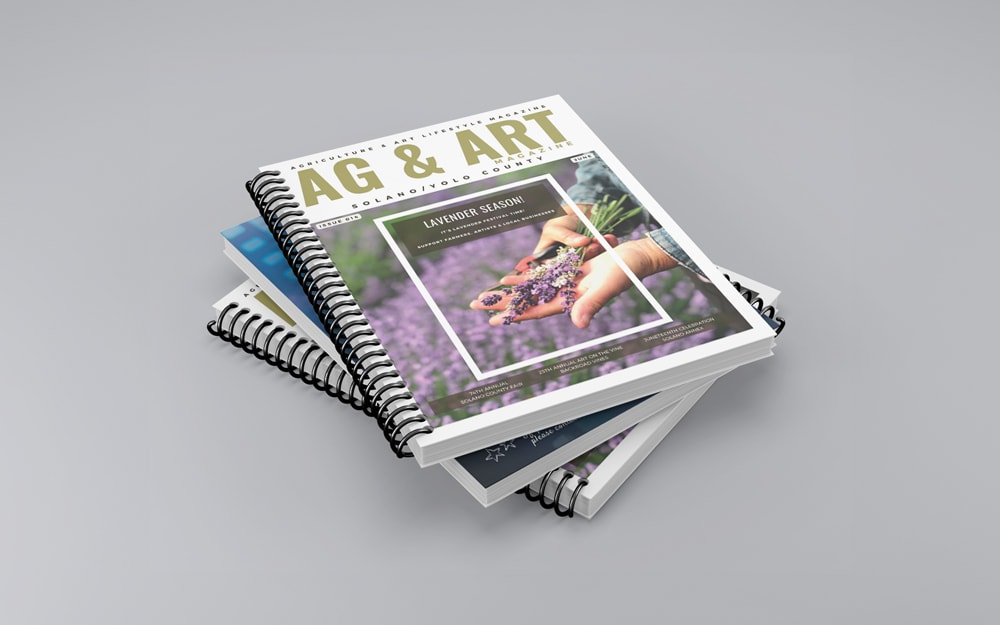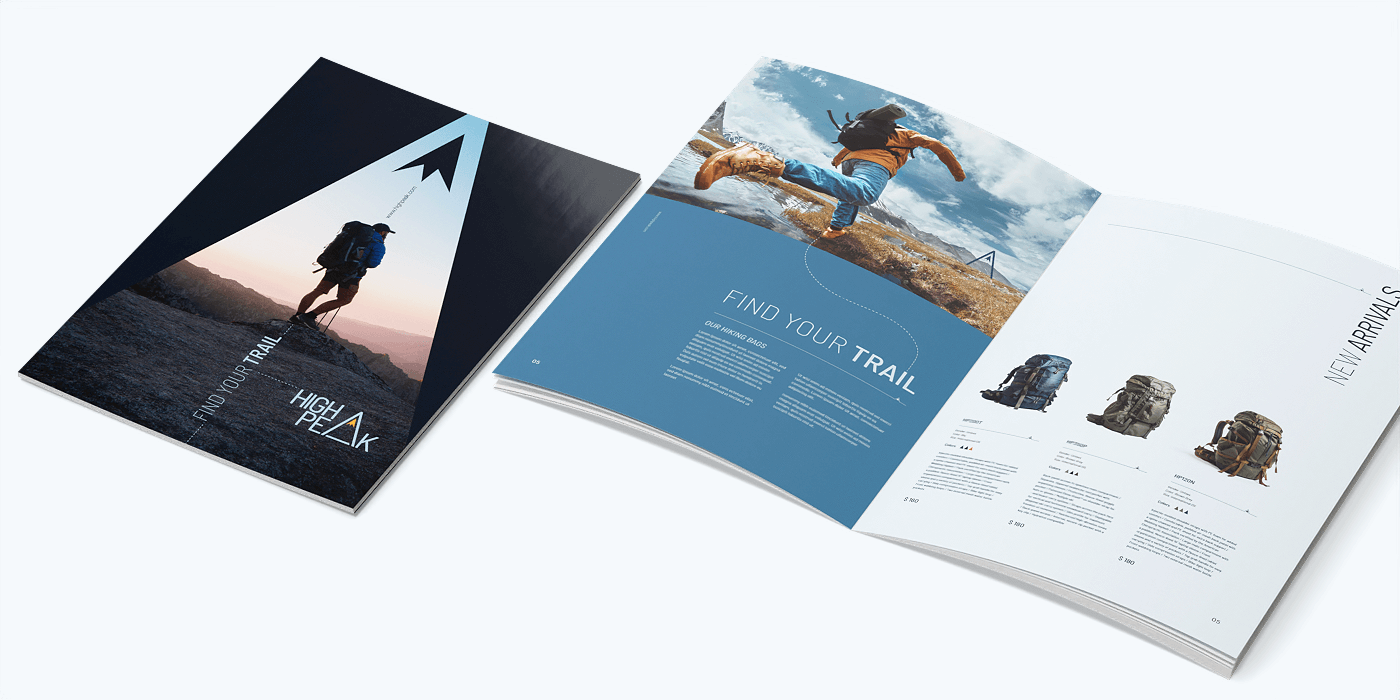Unlock the Power of Augmented Reality in Your Booklet Printing Projects
Unlock the Power of Augmented Reality in Your Booklet Printing Projects
Blog Article
The Important Overview to Recognizing Brochure Printing Options and Techniques
The process of brochure printing includes several factors to consider that can greatly influence the end product. From choosing the suitable style and dimension to understanding the subtleties of binding techniques, each selection plays a vital function. Furthermore, aspects such as paper stock and printing strategies further affect the efficiency of the brochure. As one navigates these choices, it comes to be essential to realize how they adjoin and what that means for the total end result.
Comprehending Booklet Styles and Sizes
When thinking about brochure printing, comprehending the numerous styles and sizes offered is essential for achieving the wanted discussion. Brochures can be generated in various layouts, consisting of saddle-stitched, spiral-bound, and perfect-bound, each offering unique benefits. Usual dimensions range from common letter (8.5 x 11 inches) to smaller sized alternatives like A5 (5.8 x 8.3 inches), permitting for versatility based upon content and target audience.Selecting the suitable size can influence both the layout and viewers involvement. Bigger sizes could fit visually driven content, while smaller sized layouts might be more portable and straightforward. In addition, the number of pages impacts the selection of binding approach, as thicker brochures might require sturdier bindings. Eventually, comprehending these elements enables an extra tailored technique, guaranteeing that the last item lines up with the designated message and aesthetic, boosting the overall performance of the communication.
Selecting the Right Paper Stock

Binding Methods: Factors To Consider and alternatives
When it concerns binding approaches for brochures, a number of alternatives are offered, each with distinctive advantages. Saddle stitch binding supplies an economical solution for thinner brochures, while excellent binding strategies offer a more refined try to find thicker publications. Wire-O binding attracts attention for its sturdiness and ease of usage, making it ideal for documents that need versatility.
Saddle Stitch Binding
Saddle stitch binding provides a useful and affordable solution for setting up brochures, making it a preferred selection among publishers and businesses. This binding technique involves folding sheets of paper in fifty percent and stapling them along the fold line, creating a neat and organized look. Generally appropriate for pamphlets with a lower web page count, saddle stitching is suitable for magazines, sales brochures, and educational products. The simpleness of this strategy permits for quick manufacturing and is often favored for short runs or promotional items. Nevertheless, it is important to keep in mind that saddle stitch binding might not appropriate for thicker booklets, as the spine may not hold up under boosted weight. Overall, it stays a reputable choice for many printing jobs.
Perfect Binding Techniques
Perfect binding is a widely utilized strategy that provides a specialist and polished coating to brochures and publications. This approach entails gluing the pages with each other at the spinal column using a solid adhesive, enabling for a clean edge and the capability to hold a bigger variety of pages compared to saddle sewing. Perfect binding is specifically ideal for thicker booklets, such as magazines and annual records, where a strong, level back is preferred. Additionally, it supplies the alternative for a published cover that can be designed to improve aesthetic charm. However, factors to consider such as page matter, paper weight, and the meant usage of the booklet must be thought about, as they can affect toughness and overall top quality.
Wire-O Binding Alternatives
Wire-O binding, recognized for its resilience and versatility, offers a superb choice for brochures that require easy page turning and a professional appearance. This binding technique utilizes a collection of metal loops that hold pages safely, permitting them to lie flat when open. It is especially suitable for guidebooks, presentations, and brochures as a result of its robust nature. Wire-O binding is offered in various shades and sizes, suiting different page matters and thicknesses. In addition, it permits the addition of covers and tabs, improving the pamphlet's total visual. Factors to consider for Wire-O binding include the option of cable color, the dimension of the loops, and the extent of modification wanted, every one of which can profoundly influence the last product's appearance and performance.
Digital vs. Offset Printing: Which Is Best for You?
When choosing a printing technique for brochures, recognizing the differences between electronic and counter printing is important. Digital printing uses modern-day innovation to produce premium prints swiftly and economically, making it perfect for short runs or projects requiring fast turn-around times. It enables personalization, giving the ability to publish on-demand with marginal waste.In comparison, balance out printing is a conventional technique that stands out in creating huge amounts with regular quality. It entails moving ink from a plate to a rubber covering, after that to the paper, which causes exact details and vivid colors. Nonetheless, counter printing normally needs longer configuration times and is a lot more cost-effective for bigger volumes.Ultimately, the choice in between electronic and offset printing depends this website on project needs, budget, and wanted amount. For tiny, time-sensitive tasks, electronic may be the most effective choice, while offset may be more effective for larger, premium manufacturings.

Creating Your Booklet: Tips and Best Practices
When creating a pamphlet, mindful attention to design, font style choice, and color use can substantially enhance its performance. A well-structured design overviews the viewers's eye, while appropriate font styles ensure readability and share the preferred tone. Furthermore, reliable use of color can stimulate emotions and emphasize essential information, making the total style a lot more impactful.
Selecting the Right Format
Exactly how can one successfully pick the right design for a booklet? It is essential to evaluate the brochure's purpose and target audience. A clean, organized layout enhances readability and engagement. Utilizing a grid system can help in aligning elements continually, developing an expert appearance. Furthermore, including visual pecking order through varying sizes and placements of photos and message can direct the viewers's eye and highlight crucial information. It is also essential to leave sufficient white area, which protects against overcrowding and permits better focus. Examining various formats through mock-ups can offer understanding into just how the layout performs in real-world situations, making certain that the last item fulfills both aesthetic and practical needs. Useful Selecting Proper Typefaces
A well-chosen font style can considerably boost the general layout of a booklet, matching the layout Go Here and strengthening the content's message. The option of typefaces should take into consideration readability, specifically for body text, as it assures the information is obtainable to all visitors. Sans-serif fonts are typically chosen for electronic styles, while serif font styles can offer a conventional feel in printed products. It's recommended to limit font selections to two or 3 to preserve visual coherence. Furthermore, font size plays a vital duty; headings need to be not frustrating yet unique, while body text should fit for analysis. When picking font styles, positioning with the pamphlet's theme and target market is crucial for reliable communication and aesthetic charm.
Effective Use Color
Shade offers as a powerful device in pamphlet design, shaping understandings and leading visitor emotions. It can evoke sensations of peace, excitement, or trust, depending upon the colors picked. Developers must consider shade concept principles, making sure that the chosen palette straightens with the pamphlet's message and target audience. Making use of warm colors like red and orange can develop seriousness, while cooler tones like blue and green foster tranquility.Additionally, comparison plays a crucial duty; corresponding colors can enhance readability and aesthetic charm. Uniformity in color usage throughout pages further enhances brand identity and communication. Ultimately, effective shade application not just records focus yet also reinforces the pamphlet's function, making it a necessary aspect of successful design.
Ending Up Touches: Coatings and Unique Impacts
While many think about the material and format of a brochure the most critical components, the completing touches, such as coverings and special results, play an essential duty in improving its total allure. Coatings can give protection and longevity, making sure that the brochure stands up to wear and tear. Matte finishes use an advanced, non-reflective surface area, while shiny layers can make shades show up more vivid and appealing. Unique effects, like embossing or aluminum foil marking, include a responsive dimension that can produce an unforgettable perception. These methods can highlight particular areas, drawing focus to essential information or creating aesthetic interest. In addition, UV layer can supply a high-shine surface that elevates the general look.Together, these completing touches not only boost the booklet's visual but additionally communicate professionalism and trust and focus to detail, eventually leaving a lasting influence on the reader.
Expense Factors To Consider for Brochure Printing
Comprehending the different expense factors to consider for brochure printing is necessary for organizations and organizations aiming to maximize their budgets. Key page elements influencing costs include the choice of binding, ink, and paper techniques. Greater high quality products, such as exceptional paper or specialized inks, typically boost the general expense. In addition, the dimension and web page count of the booklet play a considerable function; bigger pamphlets require even more resources and time to produce.Another important consideration is the printing method, whether electronic or balanced out, as each has its very own prices framework and viability for various amounts. Companies need to also factor in style prices, which can differ based upon complexity and the usage of expert solutions. Inevitably, delivery and handling fees can include in the total, specifically for large orders. By evaluating these elements, companies can make enlightened choices that line up with their financial capacities while attaining the wanted quality in their printed materials.
Often Asked Questions
What Are the Environmental Impacts of Booklet Printing?
The ecological impacts of pamphlet printing consist of deforestation from paper manufacturing, carbon emissions from transportation, and waste generation from disposed of materials - Booklet Printing. Sustainable practices, such as utilizing recycled paper and environmentally friendly inks, can minimize these impacts
Exactly How Can I Make Sure Shade Precision in My Pamphlet?
To assure color accuracy in a pamphlet, one ought to utilize calibrated monitors, use expert shade profiles, perform test prints, and select premium printing services that use color matching and proofing alternatives for ideal outcomes.
What Is the Common Turn-around Time for Pamphlet Printing?
The typical turnaround time for booklet printing varies relying on the intricacy and amount - Booklet Printing. Usually, it varies from a few days to two weeks, influenced by variables such as publishing approaches and finishing needs
Exist Minimum Order Quantities for Pamphlet Printing?
Can I Print Pamphlets in Numerous Languages?
Publishing booklets in multiple languages is feasible. Lots of printing services supply alternatives for bilingual or multilingual formats, permitting reliable interaction. Mindful planning warranties that make components suit different languages without endangering readability or looks. Additionally, variables such as paper supply and printing strategies additional affect the efficiency of the booklet. When considering brochure printing, understanding the different styles and dimensions available is crucial for achieving the preferred presentation. When picking a printing method for booklets, understanding the distinctions between electronic and balance out printing is essential. In addition, the size and page count of the brochure play a significant duty; larger pamphlets require even more resources and time to produce.Another vital consideration is the printing strategy, whether electronic or countered, as each has its own rates structure and viability for various quantities. The environmental influences of pamphlet printing consist of deforestation from paper production, carbon discharges from transport, and waste generation from thrown out products.
Report this page